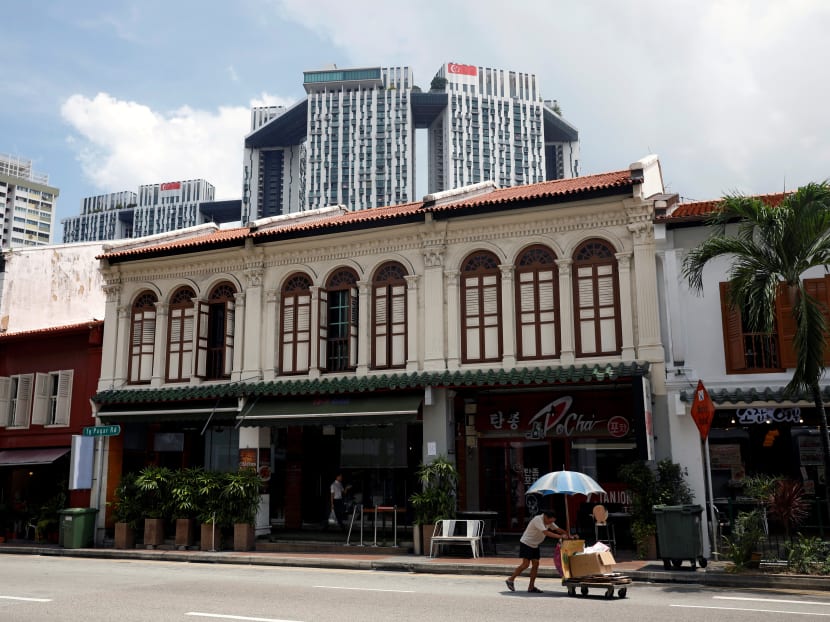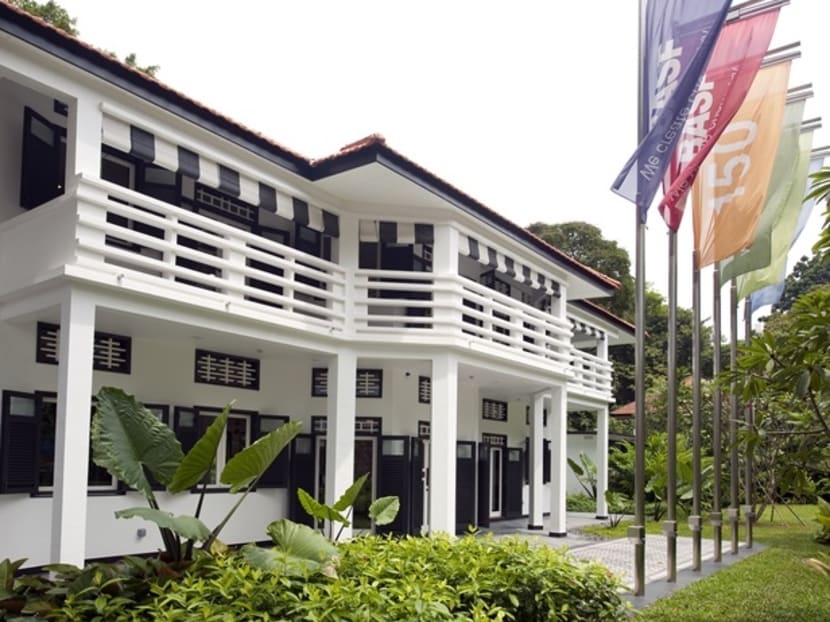Conserving historic Singapore buildings raises value of nearby homes, but could also cause gentrification: Study
SINGAPORE — When a historic building is marked for conservation in Singapore, nearby private homes generally receive a sizeable boost in their property values, a new study has found.

The researches examined more than one million residential resale transactions from 1997 to 2017 and found that the conservation of buildings had led to increased real estate values.
SINGAPORE — When a historic building is marked for conservation in Singapore, nearby private homes generally receive a sizeable boost in their property values, a new study has found.
This is even though the conserved property itself is subject to guidelines to preserve the heritage of the building, which could potentially decrease its market value since these rules restrict its development while raising maintenance costs.
Published online on ScienceDirect last month, the empirical study by urban planner Tan Shin Bin, who is a senior tutor at the Lee Kuan Yew School of Public Policy, and Assistant Professor of Law Edward Ti from the Singapore Management University, examined more than one million residential resale transactions from 1997 to 2017 and found that the conservation of buildings had led to increased real estate values.
They found this effect to be the most pronounced in residential properties located between 800m and 1.6km from the conserved site. This positive effect dissipated as the distance from conserved sites increased.
More than 7,000 buildings have been conserved since Singapore’s conservation programme began in the 1970s, according to the Urban Redevelopment Authority’s (URA) website. Examples of private residential districts with significant numbers of conserved buildings include Joo Chiat, Balestier and Geylang.
Asst Prof Ti told TODAY: “This is a relatively unexplored area of work in Asia and appears to be the first of its kind in Singapore. The conservation of buildings is something that both of us support as it preserves built heritage and collective social memory, which is important for a young country like Singapore.”
In one zone that the researchers looked at, comprising more than 3,200 postal codes in the central part of Singapore, private homes located within 800m to 1.2km from a conserved site have seen an appreciation in sale price of around S$480 per square meter during the year the site is gazetted, and an additional S$378 per square meter three years later.
The effect is not as pronounced on Housing and Development Board (HDB) flats, though it still added an additional S$83 per square metre to the resale prices of public housing in the same year the site is gazetted, and no significant increases three years after, said Asst Prof Ti.
For example, areas around the conservation of Rochester Park, which is located in Buona Vista and was gazetted in 2010, saw resale values go up by S$11.8 million that year, and an additional S$10.4 million three years later.
Gazetted in 2005, Beaulieu House in Sembawang Park saw a bump to resale values of neighbouring homes by around S$1.7 million in the year it was marked for conservation and S$6.6 million three years after.
When asked for a round figure of the impact of Singapore’s conservation programme on surrounding properties, he said the study did not calculate an average percentage figure for all transactions, since “that is dependent on a variety of factors such as what type of neighborhood property is around the site, how far they are located from gazetted site”.
The study also did not look at the value of the conserved site itself.
“However, our analysis suggests a positive and significant relationship between conserving property and an increase in value for neighbouring properties,” he added.
“These findings were quite intuitive to us, and they confirmed our initial hypothesis that conservation buildings are indeed valuable amenities in Singapore.”
In Singapore, buildings selected for conservation often had commercial potential, since they are often marketed by the Government to locals and tourists, they noted in their study.
Designating a building to be conserved often comes with improvement works in its immediate neighbourhood, such as the addition of pedestrian walkways, plazas, landscaping, control of signage and more positive activities to the area, the researchers noted.

A conserved property at Rochester Park. Photo: URA
The researchers hypothesised that these government marketing efforts and infrastructural changes that come with the gazetting of a conserved building would add to the real estate value of the surrounding district.
However, this could lead to a knock-on effect of gentrification, in which changing residential prices affects the demographic and urban identity of the area, they noted.
“Higher property prices might not necessarily be an unqualified good, because higher prices after a building is conserved might signal gentrification, increased clustering of wealthier residents and reduced socioeconomic mixing, particularly in neighbourhoods with mostly private housing,” said Asst Prof Ti.
The researchers called for policymakers to monitor changes in the neighbourhood post-conservation and to consider ways to maintain sufficient affordable housing stock around conserved sites in Singapore. They suggested having some HDB blocks next to conserved sites, since public housing is less price-sensitive to conservation gazettes.
They also noted that as the gazetting of conservation buildings could bring windfall benefits to its neighbours, their findings raise questions about appropriate tax policies.
In Singapore, a development charge is imposed on the land owner when the value of a land parcel is enhanced through zoning. According to URA’s website, the enhancement of conserved buildings within conservation areas may be exempted from the development charge if certain requirements are met.
The property owner also pays for property tax, which is based on a certain percentage of the estimated annual value of the property.
The researchers noted that some had argued that a “betterment levy” be imposed on the owners of gazetted buildings if the decision to conserve them raises their economic value.
However, it is more difficult to tax the increased value of neighbouring properties that were not gazetted, but still received positive spillover effects from the conservation, because “there are a myriad of circumstances where land value is indirectly affected”.
The researchers said policymakers should consider these spillover effects when levying a tax on conserved buildings to avoid “unfairly penalising” their owners.
“There may be scope for appropriate taxation policies to ensure further 'horizontal equity' between property owners, since whether one's property's value is affected by conservation is out of the control of the owner,” said Asst Prof Ti.
Horizontal equity is the idea that individuals with similar income and assets should pay the same amount in taxes.
“Thus, more research is needed to determine if the implementation of a development charge tax may be suitable if gazetting a property causes the nearby land value to increase.”
TODAY has reached out to the URA for comment.






